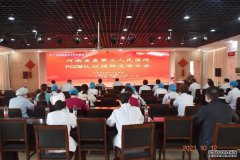圣翰德——四川高平县十倆银锭精品推荐
圣翰德——四川高平县十倆银锭精品推荐
中国古代货币。即熔铸成锭的白银。始自汉代,其后各代皆有铸造,但流通不广。至明代盛行,但不是国家法定货币。至清,始作为主要货币流通。重量不等,因以“两”为主要重量单位,故又称银两。明清两代白银作为主要货币流通,铸锭盛行。我们今天所见元宝尤以明清居多。
Saint-Hande _ High-quality Silver Ingots in Gaoping County, Sichuan Province
The silver ingot is mainly in Sichuan as the representative of the ten-two-round ingot type, and the bottom honeycomb is obvious. Chinese ancient currency. I.e., the silver cast into the ingot. Since the Han Dynasty, the later generations have cast, but the circulation is not wide. It was popular in the Ming Dynasty, but not the national legal currency. To the Qing Dynasty, it is the main currency circulation. The weight is not equal, because the "two" is the main unit of weight, it is also known as silver. In the Ming and Qing dynasties, silver was used as the main money circulation, and the ingot was popular. We have seen Yuanbao today, especially in the Ming and Qing Dynasties.color.


藏品名称:四川高平县十倆银锭
藏品规格:重:261.28g
Name of Collection: Shihu Silver Ingot, Gaoping County, Sichuan Province
Collection specification: weight: 261.28g

银锭铸成后,由公估局鉴定并用墨笔批明重量和成色。明清银锭的成色一般在95-98之间,外表具有银的特殊光泽和温润。因浇铸时范中残留有气体的原因,银锭底部都有不规则的气体空洞,俗称蜂窝。蜂窝是鉴定真伪和成色的重要参考条件。蜂窝较深、洞圆润光亮、神气足、有彩色光泽者,成色必好。如果蜂窝中灰黑一片,银锭则很有可能是低色或赝品。银表面容易氧化,所以常有一层黑色和灰白色的氧化银。白银作为货币在我国有着悠久的历史。自东汉以来黄金逐步退出流通,白银地位日益提升,银锭成为古代基础货币之一。银锭在宋朝以前称银铤,银铤大约出现在三国和南北朝时期,至隋唐时已日益完善,唐代白银货币的形制以银饼和银铤为主,一般是长方形条状,同时有饼状和船形;宋代,尤其是南宋,白银货币的使用范围更广泛,宋代和金朝银锭在各地出土较多。宋代白银货币形制以铤为主,与唐银相比形态变宽、变厚,正面四角微翘,呈砝码形,两头两个圆弧呈束腰形,辽、西夏、金的银锭形制与宋差异不大;元代铸造的银锭形制则沿袭了金朝的银铤形制,弧首束腰,正面略凹,周围有多道丝纹。
After silver ingots are cast, the weight and color are identified by the Bureau of Evaluation and marked with ink pens. The color of silver ingots in Ming and Qing dynasties is generally between 95 and 98, with the special luster and warm appearance of silver. Because of the residual gas in the casting, there are irregular gas voids at the bottom of the silver ingot, commonly known as honeycomb. Honeycomb is an important reference condition for identifying authenticity and color. The honeycomb is deep, the hole is round and bright, the air is enough, has the color gloss, the color must be good. If the honeycomb is gray and black, the silver ingot is likely to be a low color or fake. Silver surface is easy to oxidize, so there is often a layer of black and gray silver oxide. Silver, as a currency, has a long calendar in our country. History. Since the Eastern Han Dynasty, gold gradually withdrew from circulation, silver status is increasing day by day, silver ingots become one of the ancient basic currencies. Silver ingot was called silver collar before Song Dynasty. Silver collar appeared in the three Kingdoms and Southern and Northern dynasties, and became more and more perfect by Sui and Tang dynasties. The shape of silver ingot in Tang Dynasty was mainly silver cake and silver collar, which was generally rectangular strip, and there were cake and ship shape at the same time. In Song Dynasty, especially in Southern Song Dynasty, silver ingot was more widely used in Song Dynasty and Jin Dynasty. The shape of silver currency in Song Dynasty was mainly collar. Compared with Tang silver, the shape became wider and thicker, the front four corners were slightly warped, in the shape of weight, and the two arcs at both ends were waist shaped, Liao and West. In Xia and Song dynasties, the silver ingot shape of gold was not different from that of Song Dynasty, while the silver ingot shape cast in Yuan Dynasty followed the silver collar shape of Jin Dynasty, with an arc head waist, a slightly concave front and many silky lines around it.

明清时期是我国银锭铸造、使用、流通的鼎盛时期,其品种颇多,有五十两、十两、五两、四两、三两、二两和一两等各种规格。一般的银锭内都铸有收入来源、产地、年份、成色、炉名或银匠姓名等内容的铭文,内容历代不尽相同。通过研读铭文,可以鉴定银锭属于哪个历史时期,收藏者只需了解银锭上的铭文知识进行集藏即可。明清银锭还有官铸和私铸之分,官铸的银锭一般把重量铭文铸在侧面,而且每锭都有银局名,如“厘金局”、“官钱局”等,清代中后期各省铸造的官锭还要镌上省名,如“湖南厘金局”、“四川官钱局”等;私铸银锭铭文基本是私银钱号名称,如“兴盛昌、震远钱局”、“裕记汇号纹银”等等。两者的地位不同,其收藏价值也是无法相比的。在收藏市场上,同规格的官铸银锭与私铸银锭的价格相差很大,官铸银锭的标价往往是私铸银锭的数倍甚至十多倍。一是因为流传下来的官银数量更少;二是因为官银成色足,制作也更精美;三是因为官银附带的史料价值正统可靠,买进的人也放心。此外,品相好的明清银锭升值速度也较快,史料价值越强的银锭则收藏价值越高,尤其是税银及刻有金融史料性文字的银锭更是比普通品种升值空间大许多。
After silver ingots are cast, the weight and color are identified by the Bureau of Evaluation and marked with ink pens. The color of silver ingots in Ming and Qing dynasties is generally between 95 and 98, with the special luster and warm appearance of silver. Because of the residual gas in the casting, there are irregular gas voids at the bottom of the silver ingot, commonly known as honeycomb. Honeycomb is an important reference condition for identifying authenticity and color. The honeycomb is deep, the hole is round and bright, the air is enough, has the color gloss, the color must be good. If the honeycomb is gray and black, the silver ingot is likely to be a low color or fake. Silver surface is easy to oxidize, so there is often a layer of black and gray silver oxide. Silver, as a currency, has a long calendar in our country. History. Since the Eastern Han Dynasty, gold gradually withdrew from circulation, silver status is increasing day by day, silver ingots become one of the ancient basic currencies. Silver ingot was called silver collar before Song Dynasty. Silver collar appeared in the three Kingdoms and Southern and Northern dynasties, and became more and more perfect by Sui and Tang dynasties. The shape of silver ingot in Tang Dynasty was mainly silver cake and silver collar, which was generally rectangular strip, and there were cake and ship shape at the same time. In Song Dynasty, especially in Southern Song Dynasty, silver ingot was more widely used in Song Dynasty and Jin Dynasty. The shape of silver currency in Song Dynasty was mainly collar. Compared with Tang silver, the shape became wider and thicker, the front four corners were slightly warped, in the shape of weight, and the two arcs at both ends were waist shaped, Liao and West. In summer, the silver ingot form of gold is not much different from that of the Song Dynasty; in the Ming and Qing Dynasties, the period of the Ming and Qing Dynasties is the peak of the casting, use and circulation of the silver ingot in China. It has a large variety of varieties, including fifty-two, ten, two, five, four, three, two, and one or two different specifications. The general silver ingot is cast with the inscription of the source of income, the place of production, the year, the color, the name of the furnace, the name of the silversmith, etc., the contents of which are not the same. Through the study of the inscription, it is possible to identify which historical period the silver ingot belongs to, and the singer only needs to know the inscriptions on the silver ingot for collection. The silver ingot in the Ming and Qing dynasties is also divided into the official casting and the private casting, and the silver ingots of the official casting generally cast the weight on the side, and each ingot has silver. The local name, such as "Lujin Bureau", "government and money bureau", and so on, in the middle and late of the Qing Dynasty, the central and middle-later provinces cast the official ingot, such as the "Hunan Jijin Bureau", the "Sichuan Guanqian Bureau", etc.; the private cast silver ingot is the name of the private silver money, such as the "Xingsheng Chang, Zhenyuan Qian Bureau", the "Yu Jihui No.", and so on. The status of the two is different, and its collection value is not comparable. [1] In the collection market, the price of the co-cast silver ingot of the same specification is very different from that of the private cast silver ingot, and the price of the official cast silver ingot is often several times or even more than ten times that of the privately-cast silver ingot. one is because the amount of official silver is less than that of the official silver, because the silver of the official silver is sufficient, and the production also The period of the Ming and Qing Dynasties is the heyday of the casting, use and circulation of the silver ingot in China. It has a large variety of varieties, including fifty-two, ten, two, four, three, two, two, and one or two different specifications. The general silver ingot is cast with the inscription of the source of income, the place of production, the year, the color, the name of the furnace, the name of the silversmith, etc., the contents of which are not the same. Through the study of the inscription, it is possible to identify which historical period the silver ingot belongs to, and the singer only needs to know the inscriptions on the silver ingot for collection. The silver ingot in the Ming and Qing Dynasties is also divided into official casting and private casting. The silver ingots of the official casting generally cast the weight on the side, and each ingot has a silver bureau name, such as the "Lujin Bureau", "the official". in that middle and late of the Qing dynasty, the money bureau and so on, in the middle and late of the Qing dynasty, the official ingot to be cast also have the name of the province, such as the Hunan Branch Bureau, the Sichuan government and money bureau and so on; the inscription of the private cast silver ingot is mainly the name of the private silver money, such as the "prosperous chang, the earthquake yuan bureau, the margin of the margin", and so on. The status of the two is different, and its collection value is not comparable. In the collection market, The price of the same-sized official cast-in-silver ingot is very different from that of the private-cast silver ingot, and the price of the official cast-in-silver ingot is often several times or more times that of the privately-cast silver ingot. 3. The value of the historical materials attached to the official silver is positive. The whole system is reliable and the buy-in is assured. In addition, the rising speed of the silver ingot in the Ming and Qing Dynasties with good quality is also faster. The higher the value of the historical materials, the higher the collection value, especially the silver ingot with the silver and the financial historical materials, is much larger than the appreciation space of the common variety.

珍品现暂放于“四川圣翰德拍卖有限公司”有意可直接与公司联系!
This treasure is now temporarily placed in "Sichuan Shenghande Auction Co., Ltd." is interested in direct contact with the company!
四川圣翰德是一家集艺术品线上线下展览展销、拍卖、文化交流、艺术鉴赏于一体的综合性运营公司;以“汲取中国智慧,弘扬中国精神,创造中国价值”的经营宗旨,以高瞻远瞩的视野、积极的策划运作能力、极具开拓精神的团队,引领中国文化走向世界。
Sichuan Shenghande is a comprehensive operation company that integrates art online and offline exhibitions, auctions, cultural exchanges, and art appreciation. With the purpose of "drawing on Chinese wisdom, promoting the Chinese spirit, and creating Chinese values", the Chinese culture will be led to the world with a vision, active planning and operational ability, and a team with great pioneering spirit.
- 上一篇:圣翰德精品推荐——站洋币
- 下一篇:如果你不具备这三种素质,别谈金吉内创业
- 新闻
- 房产
- 汽车
- 娱乐
- 体育






















